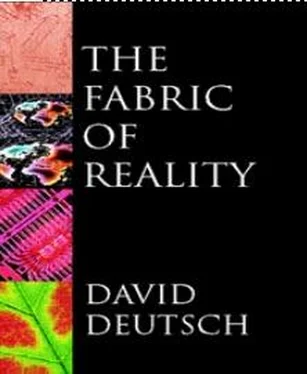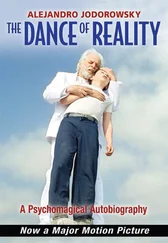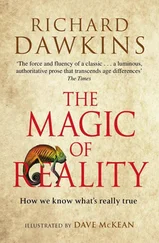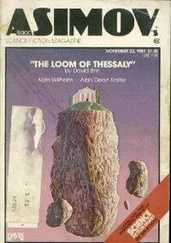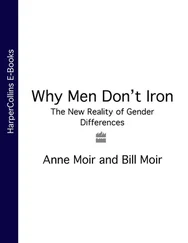David Deutch - The Fabric of Reality
Здесь есть возможность читать онлайн «David Deutch - The Fabric of Reality» весь текст электронной книги совершенно бесплатно (целиком полную версию без сокращений). В некоторых случаях можно слушать аудио, скачать через торрент в формате fb2 и присутствует краткое содержание. ISBN: , Жанр: Физика, Философия, на английском языке. Описание произведения, (предисловие) а так же отзывы посетителей доступны на портале библиотеки ЛибКат.
- Название:The Fabric of Reality
- Автор:
- Жанр:
- Год:неизвестен
- ISBN:0-7139-9061-9
- Рейтинг книги:4 / 5. Голосов: 2
-
Избранное:Добавить в избранное
- Отзывы:
-
Ваша оценка:
- 80
- 1
- 2
- 3
- 4
- 5
The Fabric of Reality: краткое содержание, описание и аннотация
Предлагаем к чтению аннотацию, описание, краткое содержание или предисловие (зависит от того, что написал сам автор книги «The Fabric of Reality»). Если вы не нашли необходимую информацию о книге — напишите в комментариях, мы постараемся отыскать её.
The Fabric of Reality — читать онлайн бесплатно полную книгу (весь текст) целиком
Ниже представлен текст книги, разбитый по страницам. Система сохранения места последней прочитанной страницы, позволяет с удобством читать онлайн бесплатно книгу «The Fabric of Reality», без необходимости каждый раз заново искать на чём Вы остановились. Поставьте закладку, и сможете в любой момент перейти на страницу, на которой закончили чтение.
Интервал:
Закладка:
If I really had access to virtual-reality time travel, I should certainly want to test the authenticity of the rendering. In the case we are discussing, the testing would begin as soon as I saw the copies of me. Far from ignoring them, I would immediately engage them in conversation. I am far better equipped to test their authenticity than Dr Johnson would be to test Julius Caesar’s. To pass even this initial test, the rendered versions of me would effectively have to be artificial intelligent beings — moreover, beings so similar to me, at least in their responses to external stimuli, that they can convince me they are accurate renderings of how I might be five minutes from now. The virtual-reality generator must be running programs similar in content and complexity to my mind. Once again, the difficulty of writing such programs is not the issue here: we are investigating the principle of virtual-reality time travel, not its practicality. It does not matter where our hypothetical virtual-reality generator gets its programs, for we are asking whether the set of all possible programs does or does not include one that accurately renders time travel. But our virtual-reality generator does in principle have the means of discovering all the possible ways I might behave in various situations. This information is located in the physical state of my brain, and sufficiently precise measurements could in principle read it out. One (probably unacceptable) method of doing this would be for the virtual-reality generator to cause my brain to interact, in virtual reality, with a test environment, record its behaviour and then restore its original state, perhaps by running it backwards. The reason why this is probably unacceptable is that I would presumably experience that test environment, and though I should not recall it afterwards, I want the virtual-reality generator to give me the experiences I specify and no others.
In any case, what matters for present purposes is that, since my brain is a physical object, the Turing principle says that it is within the repertoire of a universal virtual-reality generator. So it is possible in principle for the copy of me to pass the test of whether he accurately resembles me. But that is not the only test I want to perform. Mainly, I want to test whether the time travel itself is being rendered authentically. To that end I want to find out not just whether this person is authentically me, but whether he is authentically from the future. In part I can test this by questioning him. He should say that he remembers being in my position five minutes ago, and that he then travelled around the revolving door and met me. I should also find that he is testing my authenticity. Why would he do that? Because the most stringent and straightforward way in which I could test his resemblance to the future me would be to wait until I have passed through the time machine, and then look for two things: first, whether the copy of me whom I find there behaves as I remember myself behaving; and second, whether I behave as I remember the copy behaving.
In both these respects the rendering will certainly fail the test! At my very first and slightest attempt to behave differently from the way I remember my copy behaving, I shall succeed. And it will be almost as easy to make him behave differently from the way in which I behaved: all I have to do is ask him a question which I, in his place, had not been asked, and which has a distinctive answer. So however much they resemble me in appearance and personality, the people who emerge from the virtual-reality time machine are not authentic renderings of the person I am shortly to become. Nor should they be — after all, I have the firm intention not to behave as they do when it is my turn to use the time machine and, since the virtual-reality generator is now allowing me to interact freely with the rendered environment, there is nothing to prevent me from carrying out that intention.
Let me recap. As the experiment begins I meet a person who is recognizably me, apart from slight variations. Those variations consistently point to his being from the future: he remembers the laboratory at five minutes past noon, a time which, from my perspective, has not happened yet. He remembers setting out at that time, passing through the revolving door and arriving at noon. He remembers, before all that, beginning this experiment at noon and seeing the revolving door for the first time, and seeing copies of himself emerging. He says that this happened over five minutes ago, according to his subjective perception, though according to mine the whole experiment has not yet lasted five minutes. And so on. Yet though he passes all tests for being a version of me from the future, it is demonstrably not my future. When I test whether he is the specific person I am going to become, he fails that test. Similarly, he tells me that I fail the test for being his past self, since I am not doing exactly what he remembers himself doing.
So when I travel to the laboratory’s past, I find that it is not the same past as I have just come from. Because of his interaction with me, the copy of me whom I find there does not behave quite as I remember behaving. Therefore, if the virtual-reality generator were to record the totality of what happens during this time-travel sequence, it would again have to store several snapshots for each instant as defined by the laboratory clock, and this time they would all be different. In other words, there would be several distinct, parallel histories of the laboratory during the five-minute time-travelling period. Again, I have experienced each of these histories in turn. But this time I have experienced them all interactively, so there is no excuse for saying that any of them are less real than the others. So what is being rendered here is a little multiverse. If this were physical time travel, the multiple snapshots at each instant would be parallel universes. Given the quantum concept of time, we should not be surprised at this. We know that the snapshots which stack themselves approximately into a single time sequence in our everyday experience are in fact parallel universes. We do not normally experience the other parallel universes that exist at the same time, but we have reason to believe that they are there. So, if we find some method, as yet unspecified, of travelling to an earlier time, why should we expect that method necessarily to take each copy of us to the particular snapshot which that copy had already experienced? Why should we expect every visitor we receive from the future to hail from the particular future snapshots in which we shall eventually find ourselves? We really should not expect this. Asking to be allowed to interact with the past environment means asking to change it, which means by definition asking to be in a different snapshot of it from the one we remember. A time traveller would return to the same snapshot (or, what is perhaps the same thing, to an identical snapshot) only in the extremely contrived case I discussed above, where no effective interaction takes place between the copies who meet, and the time traveller manages to make all the parallel histories identical.
Now let me subject the virtual-reality time machine to the ultimate test. Let me deliberately set out to enact a paradox. I form the firm intention that I stated above: I resolve that if a copy of me emerges at noon from the time machine, then I shall not enter it at five minutes past noon, or indeed at any time during the experiment. But if no one emerges, then at five minutes past noon I shall enter the time machine, emerge at noon, and then not use the time machine again. What happens? Will someone emerge from the time machine or not? Yes. And no! It depends which universe we are talking about. Remember that more than one thing happens in that laboratory at noon. Suppose that I see no one emerging from the time machine, as illustrated at the point marked ‘Start’ at the right of Figure 12.3. Then, acting on my firm intention, I wait until five minutes past noon and then walk round that now-familiar revolving door. Emerging at noon, I find, of course, another version of myself, standing at the point marked ‘Start’ on the left of Figure 12.3. As we converse, we find that he and I had formed the same intention. Therefore, because I have emerged into his universe, he will behave differently from the way I behaved. Acting on the same intention as mine leads him not to use the time machine. From then on, he and I can continue to interact for as long as the simulation lasts, and there will be two versions of me in that universe. In the universe I came from, the laboratory remains empty after five minutes past twelve, for I never return to it. We have encountered no paradox. Both versions of me have succeeded in enacting our shared intention — which was therefore not, after all, logically incapable of being carried out.
Читать дальшеИнтервал:
Закладка:
Похожие книги на «The Fabric of Reality»
Представляем Вашему вниманию похожие книги на «The Fabric of Reality» списком для выбора. Мы отобрали схожую по названию и смыслу литературу в надежде предоставить читателям больше вариантов отыскать новые, интересные, ещё непрочитанные произведения.
Обсуждение, отзывы о книге «The Fabric of Reality» и просто собственные мнения читателей. Оставьте ваши комментарии, напишите, что Вы думаете о произведении, его смысле или главных героях. Укажите что конкретно понравилось, а что нет, и почему Вы так считаете.
